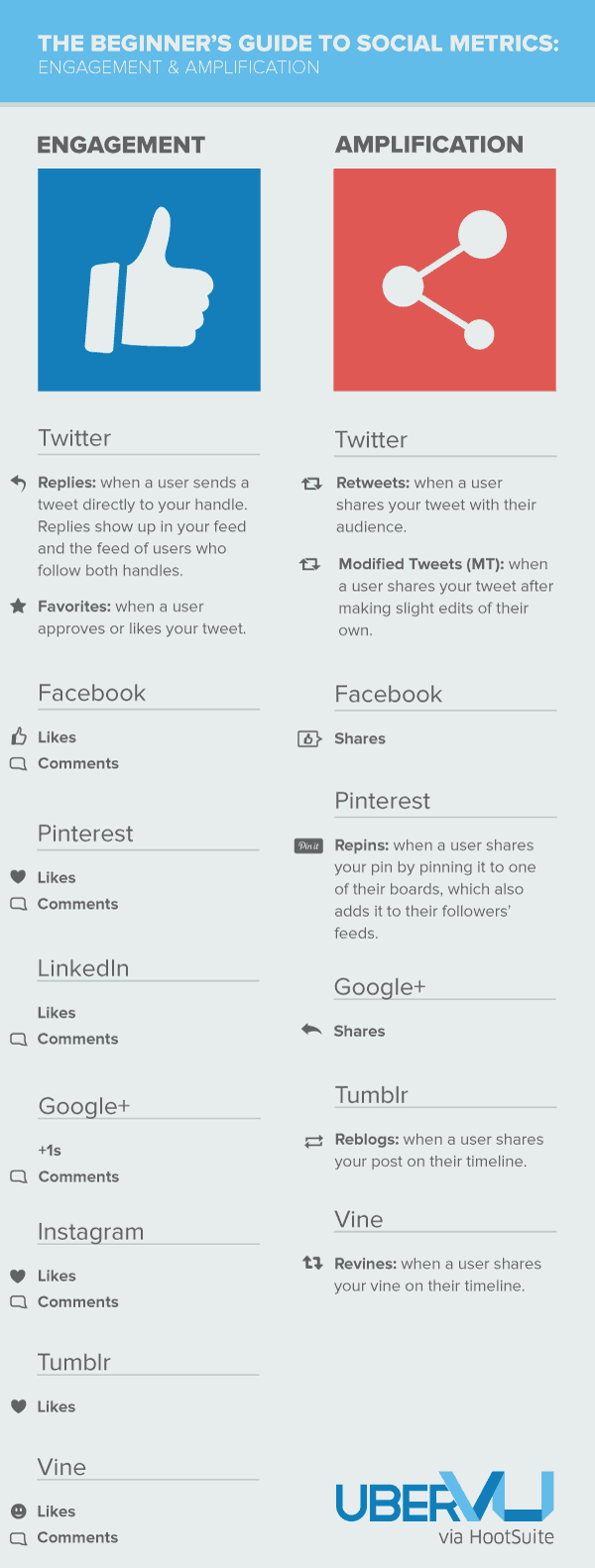Return on Investment (ROI)
[1]“Social media measurement is like driving a modern car. You may have a dashboard with all the lights, toggles, gauges, and metrics, but remember, the most important piece of data to have in front of you is the GPS screen. The GPS screen indicates where you want to go (your objective), where you are now, and how to get there”- Jeremiah Owyang
Social media ROI = (SM return – SM investment) / SM investment %.
“Not everything that can be counted counts, and not everything that counts can be counted.”
Using Google Analytics to measure website traffic can determine activity, geographic, demographics, device usage and how long they stay with you on the visit, to figure out your ROI. This is valuable information to further develop your brand or refine to a specific market. Other forms of social media are not as easy to measure and many business owners look at the traditional short time show me the money approach for example hand out the flyers for $5 off pizza outside the shop – instant return. Social media is more about relationships with less broadcasting and more communication. For social media to work and to return any investment you need to be always working with the objectives and strategies of the company. The key to making the most out of social media is listening and measurement tools are crucial. Take socialmention.com, type in the keyword and it will tell you how active that word, brand etc has been on social media it’s a case of managing what you can measure.
Define your strategy and why you are doing social media then it’s easier to measure the results. Do you want more sales? Then how will you market to get more sales? or how will you interact with the customer to get more sales?
Within your strategy determine what a successful social media campaign would look like to you. Would 1000 shares on your Facebook page be a success? Did this convert to what you wanted for your business? brand engagement?
Or 500 people purchasing your new range of skincare? You can check metrics of where the consumers came from, you can ask them for feedback, but you can’t visually see at first glance why they have purchased and what brought that decision. Measuring the number of tweets, likes etc and not calculate delayed sales. Social media would have played a role as we search for information on products before we reach the store to purchase.
- We gain brand awareness through visits, conversations, increased exposure and views converts to connection with the brand.
- Brand engagement through members, user generated content, followers, which reinforces loyalty and commitment to the brand.
- Word of mouth, consumers who are engaged and aware are willing to share opinions – negative or positive. We see other consumers as more trustworthy than the company provided information. TripAdvisor is a good example word of mouth use, people review their trip and other people make decisions based on that. Amazon reviews is another, we look at the reviews instead of looking at the product description, giving more consumer power regarding the marketing direction.

Figure 1: Social metrics (Source: Hootsuite. 2014, May)
Belkin released a new iPhone case in conjunction with Lego, it asked customers to “show off their creativity and how each one personalised their case by tagging their Instagram photos with #LEGOxBelkin.” There are 488 posts, not many if you look at customers driven interaction on YouTube. Twitter users also used the same hashtag within that social networking service. There are 266 customer reviews on Amazon – 67% of them 5 stars YouTube is full of reviews of the product explaining, product quality ,unboxing, colours etc. If you search on YouTube for ‘Belkin Lego case iPhone’ there are 8,860 videos!! Official statement and video from Belkin

lego Marketing
Figure 2: lego iPad case (Source: Belkin. 2015)
Social media is consumer controlled and those consumers sold the product for Belkin; uploading images, videos, reviews, and blogs, the company just sat back and reaped the rewards. Motivating consumers to participate will always have a higher rate of return, look at Coca-Cola’s name on a coke bottle it engaged consumers to post, respond, upload, share etc. In fact, Coca-Cola is the top player in social media and they always run campaigns that involve the 4 C’s: create, connect, control and consume.
Skittles took the concept of active consumer control to a whole new level by changing their website to a social media site – talk about transparency! Skittles.
Likes do not convert to purchases. So how do you measure social engagement? As consumers invest time and resources interacting with social media consumers oriented framework for evaluating social media consumers four key motivators and these should be considered first:
- Control: consumers are in control of their social media, this has to be considered when you are making any strategy decisions
- Creation: user and consumers create the content
- Connection: for consumers it’s all about connection
- Consumption: users engage with everything everywhere, they consume articles, reviews, and blogs.
[2]That is, instead of emphasising their own marketing investments and calculating the returns in terms of customer response, managers should begin by considering consumer motivations to use social media and then measure the social media investments customers make as they engage with the marketers’ brands.
Some of the ways that social media can save the company money: (and therefore return greater investment)
- User forums / FAQ: reduction in phone centers as questions can be answered via searching. Consumers talk to each other via forums, groups, Facebook etc, getting questions or concerns answered.
- Market research: an active social presence aids with market research as you can gauge how the consumer is reacting or conversing about products. A company can check on a proof of concept without releasing the product.
- Recruitment costs: using social media to get your brand message out there aids with interest and can leverage employees.
- Marketing costs: traditional media advertising is declining. Paper, radio / TV campaigns are often one-hit wonders and can have large costs. Social media applications mediums are free then the company pays to engage with consumers.
It’s about connection, reach, and frequency and gaining social proof from consumer interaction with the brand – good or bad, measurement then rinse and repeats. A company cannot see social media as an existence of its own, it lives and breathes throughout a social company and not everything is quantifiable. A well designed social media campaign can drive traffic, sell a product, keep the company fresh and engages the consumers at all times and this is where the ROI lays.
References
[1] Fisher, T (2009) Journal of Database Marketing & Customer Strategy Management, http://www.palgrave-journals.com/dbm/journal/v16/n3/full/dbm200916a.html Vol 16, 3, 189-195
[2] Hoffman, Donna (Fall 2010) Can you measure the ROI of your social media marketing. Retrieved from http://sloanreview.mit.edu/article/can-you-measure-the-roi-of-your-social-media-marketing/
Images
Hostile. (2014, May) Social metrics [Image]. Retrieved from https://blog.hootsuite.com/beginners-guide-engagement/
Belkin. (2015). Lego iPad case [Image]. Retrieved from https://metrouk2.files.wordpress.com/2014/11/
Recent Comments